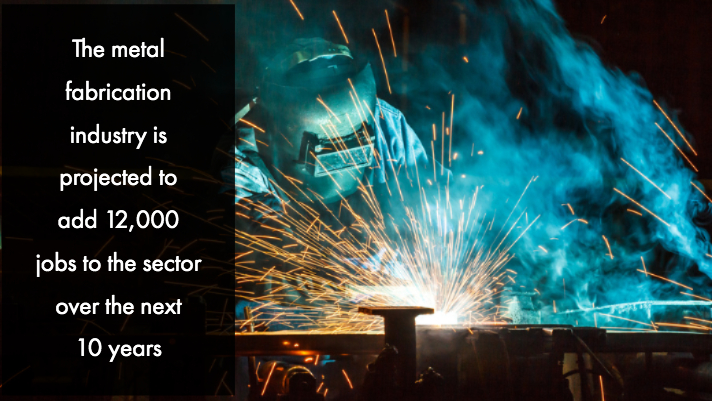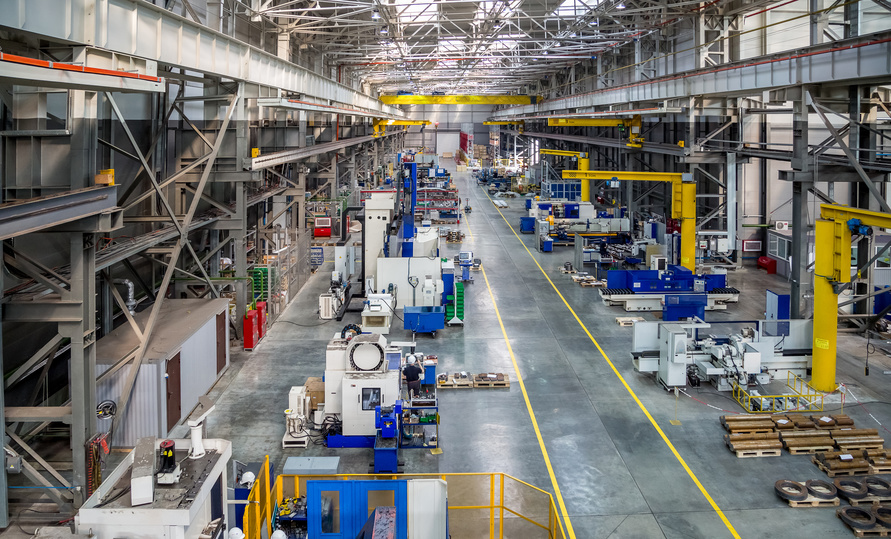Understanding The Metal Fabrication Industry to Help You Grow Your Business
Leave a CommentIf you’re operating a business within the umbrella of the larger metal fabrication industry, then there’s no denying how helpful it is to understand your place within the larger market. In fact, doing so will not only help you with your current client communications, but it may also help you develop a stronger reputation which can lead to even further business growth down the line. But it all starts with learning more about the metal fabrication industry.

The Metal Fabrication Industry is Experiencing Growth
Because today’s world has so many moving parts, and because things are constantly changing and evolving, it’s crucial that you understand your place within the wider industry. When it comes to the metal fabrication sector, the good news is that things are currently experiencing a growth spurt. In fact, according to data from the U.S. Bureau of Labor Statistics, the metal fabrication industry is projected to add 12,000 jobs to the sector over the next 10 years. That’s a pretty good place to be if you’re in the business of using thin metal strips, thin aluminum strips, or any other types of combined metals.
Read Up on Industry News and Best Practices
CEOs of famous companies such as Amazon’s Jeff Bezos and Microsoft’s Bill Gates did not get to be so successful without the right combination of hard work and knowledge. A large part of their knowledge came to them through a commitment to reading and staying up on the current news in their particular industries. It’s only once you have a firm understanding of your market that you can truly begin to capitalize on it. Whether we’re talking about the software industry or the metal fabrication industry, the same principles apply to both computers and thin aluminum strips. You can make significant progress by committing to learning the current best practices of your competitors and other industry experts. In this way, you will be far more prepared to capitalize on trends and improve the quality of your business.
At Thin Metal Sales we take pride in offering a wide variety of thin aluminum strips, stainless steel, brass and copper, and everything else you could need to cover your combined metals needs. Whether you’re looking for a company who has industry insights and experienced knowledge or a company that values every customer interaction, we are here to bring you high-quality service at an affordable price. Curious about how we can work together, or are you just looking for some more information on what we do? Well, do not hesitate to reach out and speak with a member of our team today. We can’t wait to work with you!
6 Tips For Improving Sheet Metal Design
Leave a CommentFollowing manufacturing design steps is critical for a thin steel sheet metal project to ensure success without issues cropping up. Sheet metal is a $30 billion industry, so it’s important that the sheet metal part is ready for manufacturing to keep project costs down. Whether you’re working with 17-7 stainless, 302 stainless, 304 stainless, or stainless steel, here are a few tips for improving sheet metal design:

Determine Hole Sizes
If you design the wrong hole size, it could break your punch equipment. Determining the right hole size for the punch being used will help the thin steel sheet make its way through the manufacturing process. The hole’s diameter should be equal or greater than the sheet metal’s thickness.
Inside Radius
Strain inside the piece can increase as the bend radius reduces size. If you exceed a materials fatigue point, cracks will start to form. Use the 1x Thickness=Inside Radius Rule when working with thin sheet metal.
Simplify Folds
If you can simplify your design, it will be less expensive for production in the long run. Simple angled bends can help you achieve this goal. These bends feature a radius that is the same or larger than the sheet’s thickness. Keep in mind that designing small bends for large and thick parts may be inaccurate and costly. Consider how you can create the simplest design possible for your part that will also be cost-effective and easy to produce.
Tooling
The tooling you use will limit how that part is shaped, as well. Conventional brake tooling creates precision straight line bends for any length of parts made from fabricated sheet metal. Machined and precision sheet metal parts have very different terms in how they can be manufactured and what tolerances they will allow.
Limit Tight Tolerance
Having too many tolerance callouts on a part can be unnecessary and expensive. There are only a few surfaces to a part that are critical for its ability to function. These include distances, radii, and hole diameters. Limiting tight tolerance will help you create a more budget-friendly design.
Uniform Bend Maintenance
Maintaining proper uniform bends can increase the affordability of the part. Bends that are in the same place on a part should be designed in the same direction to avoid the occurrence of part reorientation. This helps create more cost-effective parts that are also easier to produce.
By following these tips, manufacturing designers can make sure a thin steel sheet is formed and produced accurately. This can help reduce project costs, improve lead times, and provide better quality to customers. Producing quality parts takes careful consideration every step of the way if you want to be successful.

